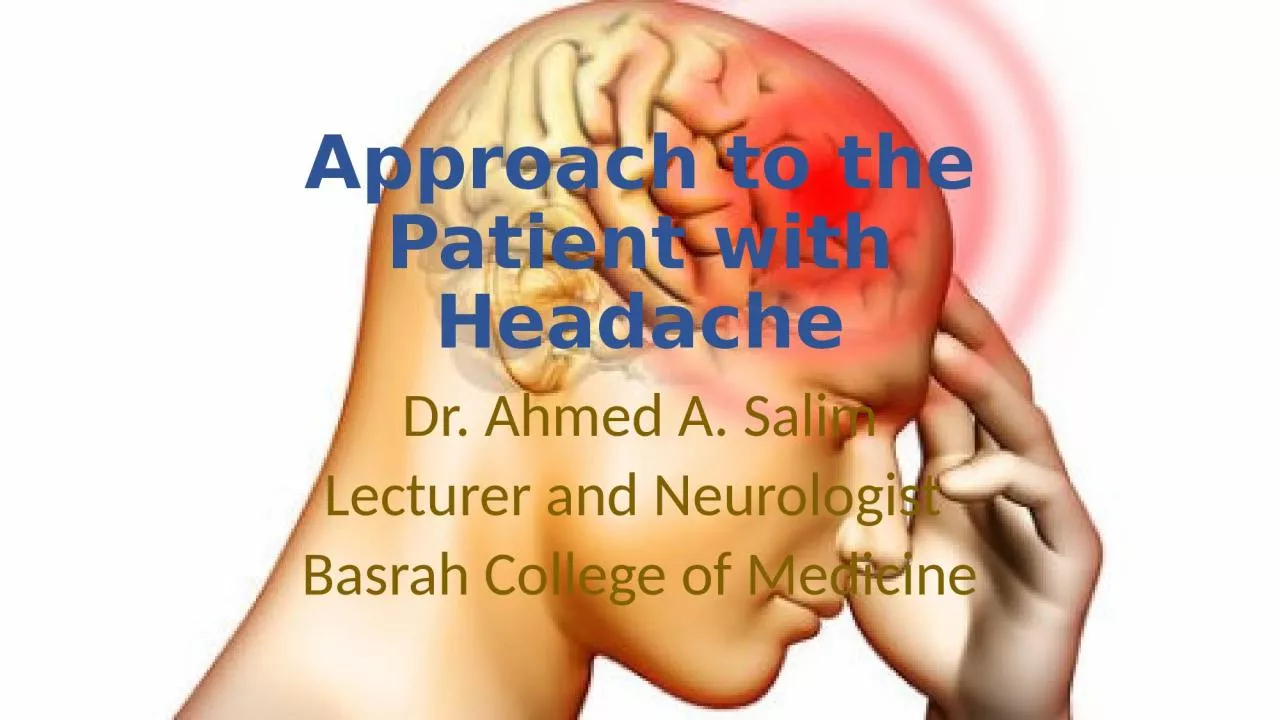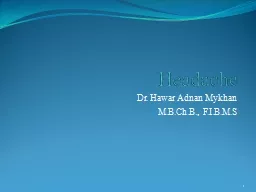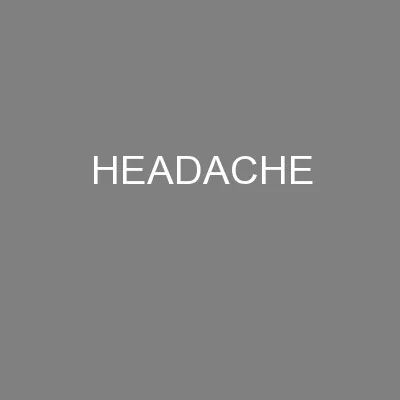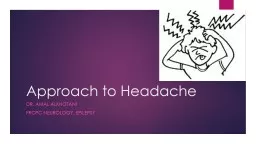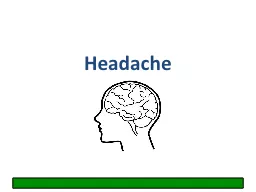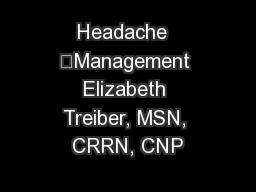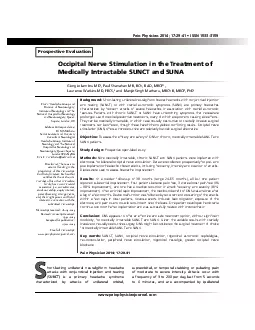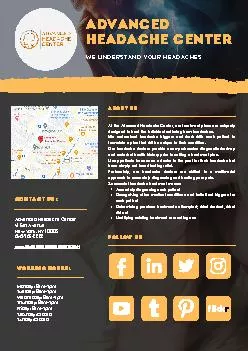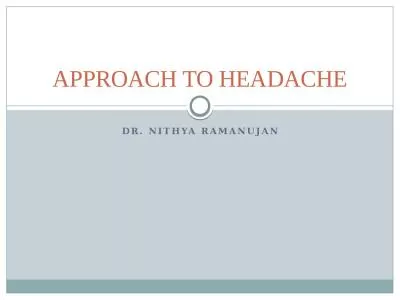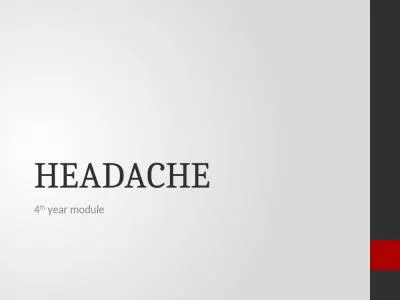PPT-Approach to the Patient with Headache
Author : elysha | Published Date : 2024-01-29
Dr Ahmed A Salim Lecturer and Neurologist Basrah College of Medicine Headache is one of the most common reasons for presentation to an emergency department Headache
Presentation Embed Code
Download Presentation
Download Presentation The PPT/PDF document "Approach to the Patient with Headache" is the property of its rightful owner. Permission is granted to download and print the materials on this website for personal, non-commercial use only, and to display it on your personal computer provided you do not modify the materials and that you retain all copyright notices contained in the materials. By downloading content from our website, you accept the terms of this agreement.
Approach to the Patient with Headache: Transcript
Download Rules Of Document
"Approach to the Patient with Headache"The content belongs to its owner. You may download and print it for personal use, without modification, and keep all copyright notices. By downloading, you agree to these terms.
Related Documents

